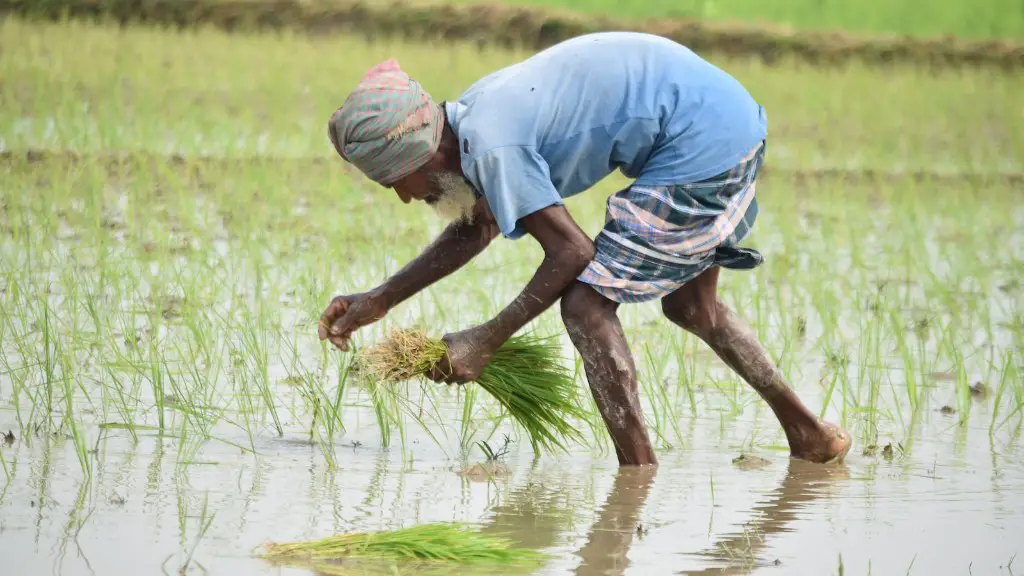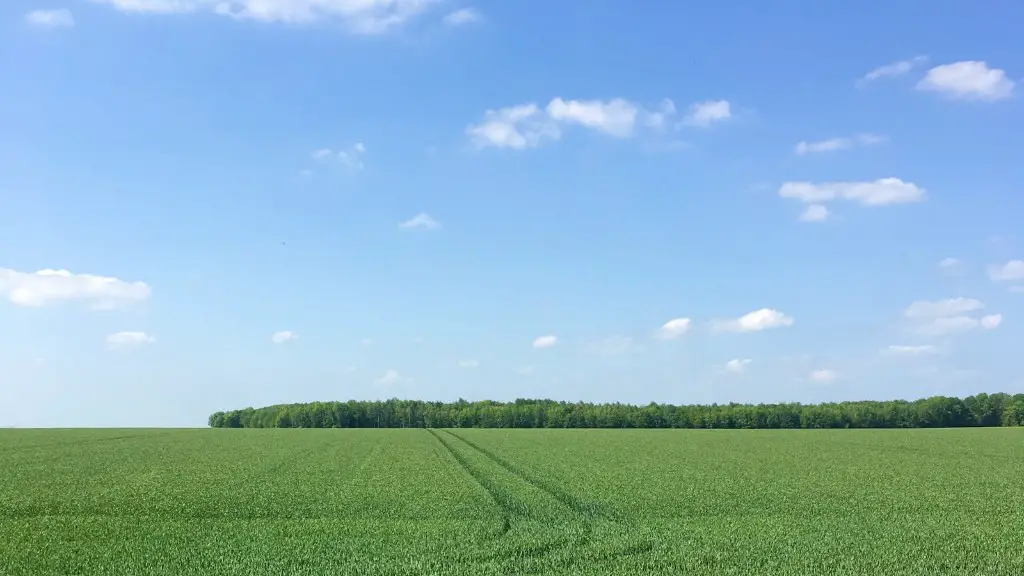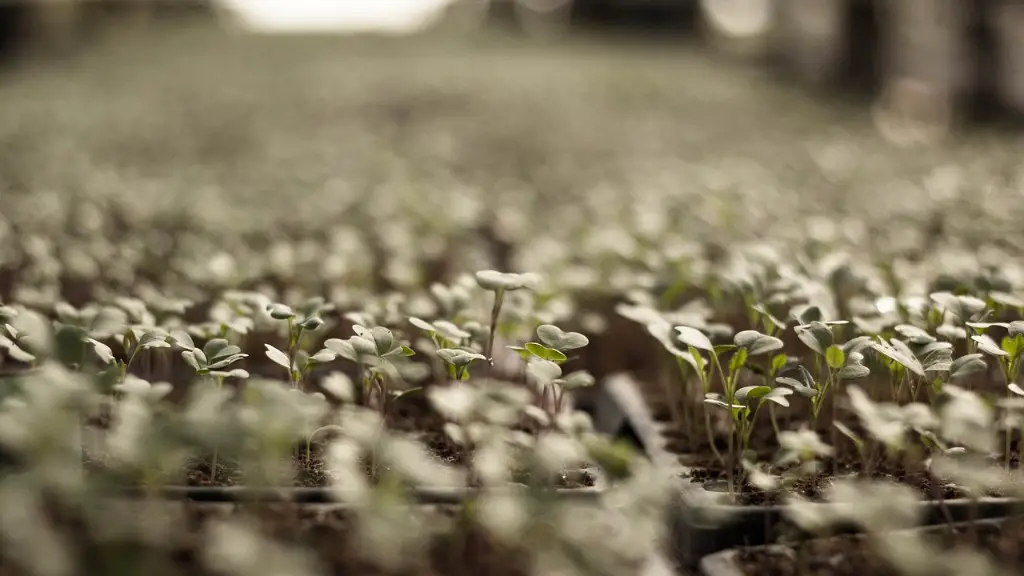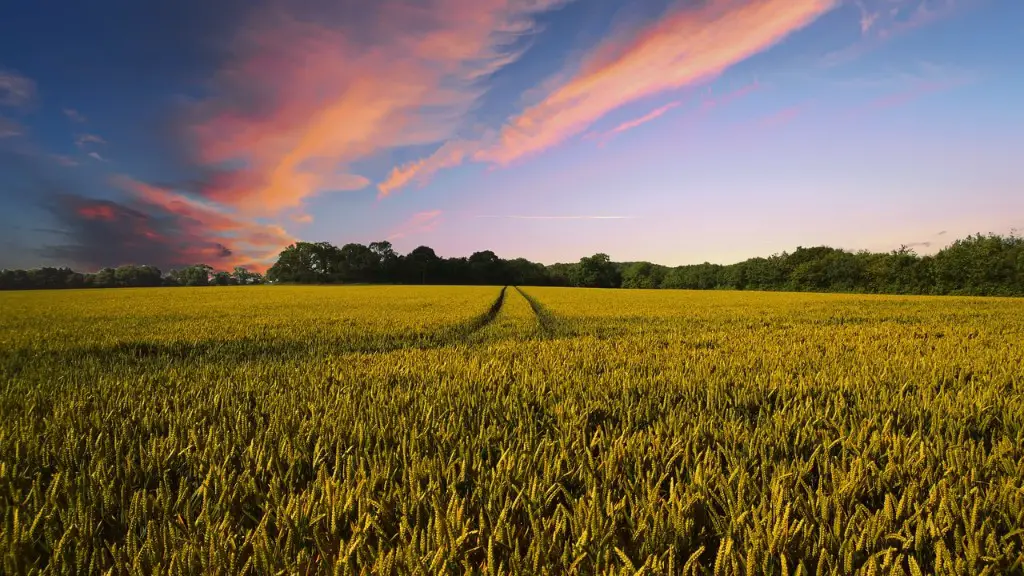The world’s population is growing at an unprecedented rate and is predicted to reach 9.1 billion by 2050. This increase in demand for food presents a significant challenge for the agricultural sector. Not only must farmers produce more food, but they must do so in a sustainable way that does not damage the environment. Agriculture is also facing the challenges of climate change and water scarcity. With rising temperatures and changes in rainfall patterns, farmers must adapt their practices to ensure their crops can survive. And as water becomes an increasingly scarce resource, farmers must find ways to use it more efficiently.
The main challenges faced by agriculture are:
1) Increasing Costs: Farmers have to contend with increasing costs for inputs such as seeds, fertilizers and fuel. At the same time, they have to sell their products at lower prices due to increased competition.
2) Weather: The success of any agricultural crop is highly dependent on weather conditions. Drought, floods and other extreme weather conditions can destroy crops and lead to huge losses for farmers.
3) Pests and Diseases: Pests and diseases can also have a devastating effect on crops. Farmers have to constantly battle with pests and diseases, which can lead to significant losses.
4) Soil Degradation: Agricultural activities can degrade the quality of soils, making them less productive. This is a serious problem in many parts of the world where farmers are struggling to maintain productivity levels.
5) Water Scarcity: Water is essential for agriculture, but in many parts of the world, water scarcity is a major challenge. This is particularly acute in countries where irrigation is necessary for successful crop production.
What is the biggest challenge facing agriculture today?
Climate change is one of the biggest challenges facing farmers today. With less land available for farming and an increased demand for water, farmers must find ways to adapt in order to continue to produce food for the world. One way to do this is to use more efficient irrigation methods to reduce water usage. Another is to use cover crops and other methods to reduce greenhouse gas emissions from agriculture. Finally, farmers can help to preserve biodiversity by using sustainable practices that protect and restore natural habitats.
1) Production expenses: With the rising cost of inputs, farmers are struggling to keep up with expenses. This is especially difficult given the recent decline in farm income.
2) Farmland markets: There has been a lot of consolidation in the farmland market, and many farmers are concerned about the future of the market.
3) Another year of strong farm income?: There is a lot of uncertainty about the future of farm income, given the volatile nature of the agricultural market.
4) Grain stocks: With the current level of grain stocks, farmers are concerned about the possibility of a supply shortage in the future.
5) China, China, China: China is a major importer of agricultural products, and many farmers are worried about the potential impact of the country’s economic slowdown.
6) Supply chains: The current system of supply chains is inefficient and often leaves farmers with little bargaining power.
7) The economy, obviously: The overall state of the economy is a major concern for farmers, as it can have a big impact on farm income and the prices of inputs.
8) Policy priorities: There is a lot of uncertainty about the priorities of the new administration, and how they will impact the agricultural industry
What are the three major issues facing the agricultural industry today
As farmers and livestock producers across the country look ahead to the new year, there are three primary issues that are causing an air of uncertainty: agricultural trade, tax reform and the new farm bill.
Agricultural trade is a major concern as the current administration renegotiates several trade deals, including the North American Free Trade Agreement (NAFTA) and the Trans-Pacific Partnership (TPP). There is a possibility that new trade deals could be beneficial for agriculture, but there is also the potential for disruptions in existing markets if negotiations fail.
The tax reform bill that was passed by Congress in December 2017 also has potential implications for agriculture. The bill includes a provision that repeals the estate tax, which could be a positive for farmers and ranchers who pass their businesses on to their heirs. However, the bill also eliminates the deductibility of state and local taxes, which could be a negative for agriculture depending on how it is implemented.
Finally, the new farm bill is currently being negotiated in Congress and is expected to be released in early 2018. The farm bill includes programs that provide financial assistance to farmers and ranchers, and it is unclear at this point what the final bill will look like. There is a possibility that some programs could be cut or eliminated
Environmental factors that influence the extent of crop agriculture are terrain, climate, soil properties, and soil water. It is the combination of these four factors that allow specific crops to be grown in certain areas.
For example, some crops require a lot of water, so they can only be grown in areas with high rainfall. Other crops need warm temperatures to grow, so they can only be grown in tropical or subtropical regions. And some crops can only be grown in specific types of soil, so they may only be able to be grown in certain areas.
By understanding these environmental factors, farmers can choose which crops to grow in their specific area in order to maximise their chances of a successful harvest.
What are some current agricultural issues 2022?
Exhibit 1: Fertilizer, Crop Protection, and Labor Costs
Fertilizer:
The average cost of fertilizers has increased by about 25 percent in the last year.
Crop Protection:
The average cost of crop protection products has increased by about 20 percent in the last year.
Labor:
The average cost of labor has increased by about 10 percent in the last year.
Production risk is the risk that comes from the uncertain natural growth processes of crops and livestock. This type of risk can be difficult to predict and manage, as it is often out of the farmer’s control. Price or market risk is the risk of fluctuating prices for inputs or products. This type of risk can be managed through hedging or other risk management strategies. Financial risk is the risk of changes in financial conditions, such as interest rates or credit availability. This type of risk can be managed through financial planning and diversification. Institutional risk is the risk of changes in government policies or regulations. This type of risk can be managed through communication and engagement with government officials. Human or personal risk is the risk of personal injury, illness, or death. This type of risk can be managed through insurance and safety precautions.
What are risks in agriculture?
There are many sources of risk that can affect businesses and economies. The most common sources of risk are weather, climate, diseases, natural disasters, and market and environmental shocks. Other risks relate to logistics, infrastructure, public policy, the political situation and institutions.
Businesses and economies are constantly exposed to risks, and it is important to be aware of the different types of risks that exist. By understanding the different sources of risk, businesses and policymakers can be better prepared to manage and mitigate the impacts of these risks.
Agricultural production is influenced by many factors, including climate, soil type, slope, land tenure, markets, transport, and capital and technology.
Climate is perhaps the most important factor affecting agriculture. Different crops prefer different climates, and the type of climate will affect the depth and moisture content of the soil.
Soil type is also a critical factor in determining what crops can be grown. Different crops prefer different soils, and the type of soil will also affect the depth and moisture content.
Slope is another important factor affecting agriculture. The angle of slope will affect the type, depth and moisture content of soil, as well as the type of crop that can be grown.
Land tenure is also a key factor in agriculture. The type of land tenure ( Whether it is owned, leased, or rented) will affect the type of crop that can be grown, as well as the amount of capital and labor that can be invested in the land.
Markets are also important for agriculture. The availability of markets for agricultural products will affect what crops are grown and how they are marketed.
Transport is also a key factor in agriculture. The availability of transport infrastructure will affect the costs of getting agricultural products to market,
What are some major problems confronting US agriculture
The United States faces a number of major problems when it comes to agriculture. They include the degradation of farmland, depletion of resources, and heavy mechanization.
Degradation of farmland refers to the loss of fertility and productivity of the land over time. This is caused by a number of factors, including unsustainable farming practices, erosion, and pollution.
Depletion of resources refers to the loss of freshwater, soils, and other vital resources needed for agriculture. This is caused by over-exploitation, climate change, and other environmental factors.
Heavy mechanization refers to the use of large machines in agriculture, which can lead to soil compaction, loss of biodiversity, and other negative impacts.
if you’re a farmer, the three biggest challenges you face are water, labor, and shipping. all three of these factors are beyond your control, so you can’t do anything to change or improve your situation. this can be extremely frustrating, but you have to remember that you’re not the only one facing these challenges. there are plenty of other farmers out there who are in the same boat as you. so take heart and keep plugging away. you’ll get through this.
What are four agricultural negatives?
Conventional farming is the type of farming that is most common in developed countries. It typically involves large-scale production of a single crop, heavy reliance on mechanization and a reliance on fossil fuels, pesticides, antibiotics and synthetic fertilizers. While this system can yield high production levels, it also contributes to climate change, pollutes air and water, and depletes soil fertility.
Farming is a hazardous industry. Farmers and farm workers work with potentially dangerous machinery, vehicles, chemicals, livestock, at height or near pits and silos. They are exposed to the effects of bad weather, noise and dust.
Farming is one of the most dangerous occupations in the world. In the United States, for example, farming is consistently ranked as one of the most dangerous industries. The danger comes from a variety of sources, including exposure to potentially dangerous machinery, vehicles, chemicals, and livestock. Farmers also work at height or near pits and silos, which can be dangerous. Furthermore, they are exposed to the effects of bad weather, noise, and dust.
Despite the dangers, farming is essential to the world. Farmers produce the food that we eat and the fiber that we use. They provide us with a vital service. However, it is important to be aware of the dangers of farming so that we can keep ourselves safe.
What are 5 environmental factors that affect the agriculture industry
There are many environmental factors that influence the amount of arable land available for crops. These include the terrain, climate, soil properties, and soil water. Crops need space to grow, and they also need sufficient light, warmth, and moisture. In addition, the soils must be of sufficient depth with the right texture and chemical properties to support plant growth. Good drainage is also important to prevent waterlogging and soil erosion.
Apart from soil and climate, there are many other factors that influence agriculture. These include water, topography, and weather.
How human activities affect agriculture?
Trees and plants play an important role in stabilizing sediment and preventing erosion. When we remove them, or disturb the roots with plowing or overgrazing, it can increase erosion rates by 10 to 100 times. This, in turn, decreases water quality by increasing sediment and pollutants in rivers and streams. We need to be careful not to disturb the roots that help keep our soil in place and our water clean.
There are a number of production risks that can stem from the uncertain natural growth processes of crops and livestock. These risks are typically related to weather and climate conditions, such as temperature and precipitation, as well as to pest and disease infestations. Managing these risks effectively can be crucial to ensuring a successful harvest and productive livestock.
Warp Up
Farming is a difficult and demanding occupation. Farmers must contend with unfavorable weather conditions, insects and disease, and financial risks. Large farms require substantial capital investment in land, equipment, and labor, and they face competition from other farms and agribusinesses. Government policies and regulations also affect agriculture.
The challenges faced by agriculture are many and varied, but some of the most pressing include climate change, water scarcity, and soil degradation. With the world’s population projected to reach 9.7 billion by 2050, the demand for food will only continue to increase, making it more important than ever for farmers to find ways to increase yields and sustainably produce food.





